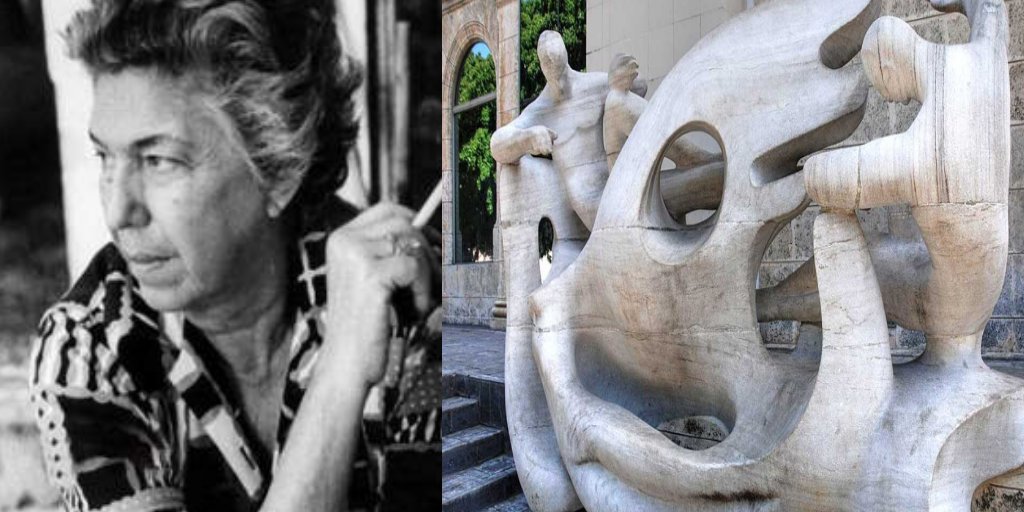A leading figure in Cuban sculpture is the artist Rita Longa Aróstegui, who is undeniably the most prolific and recognized creator in this field in the largest archipelago of the Antilles, with a large number of pieces placed in parks, cemeteries, building façades, private residences, churches, theaters, squares...
The illustrious sculptor, a graduate from the San Alejandro Academy, always had an irreverent attitude towards the postulates learned at the institution, as her endeavors were marked by innovative and transgressive airs.
.jpg) "My first works were a play on lines and forms, a search for daring solutions, new expressions, attempts that gradually acquired greater security", Rita Longa herself emphasized about her creative directions, which marked her entire work.
"My first works were a play on lines and forms, a search for daring solutions, new expressions, attempts that gradually acquired greater security", Rita Longa herself emphasized about her creative directions, which marked her entire work.
In 1932, when she was barely 20 years old, she presented her works at the Salón Femenino del Círculo de Bellas Artes (Women's Salon of the Circle of Fine Arts), a venue where her work received significant recognition from the public and the specialized critics.
Two years later she presented her first personal exhibition at the Lyceum, where she had previously been a pupil. This significant step was followed by her participation in the First National Salon of Painting and Sculpture (1935). There her piece Torso won one of the prizes.

Another success of her career was Figura trunca, which, according to the En Caribe Encyclopedia of History and Culture, "was exhibited - and particularly celebrated by North American critics - at the 1939 Latin American art exhibition organized as a group show by the Riverside Museum."
However, Rita's first professional challenge came in 1940, when the architect Eugenio Batista entrusted her with the creation of a Sacred Heart for a private residence that was about to be inaugurated. The artist took the opportunity to take up the challenge of harmoniously integrating sculpture with architecture.

The religious theme continued to be a leitmotif in her work in emblematic works which became symbols such as Santa Rita de Casia (1943, designed for a church in Miramar), La Virgen del Camino (1948) and La Piedad (1957), a lavish marble sculpture she designed for a mausoleum in the Colón cemetery.
Another very popular facet of this artist's work is the famous Family Group (1947), graceful figures of deer placed in the Havana Zoo, as well as Ballerina, at the entrance to the Tropicana cabaret.

Her Forma, Espacio y Luz (Form, Space and Light), which has presided over the main façade of the Museo Nacional de Bellas Artes since 1953, is also praiseworthy. Another of her most admired creations is La fuente de Las Antillas (The Fountain of the Antilles), which Rita placed next to the Hórmigo River, at the entrance to the city of Las Tunas - the so-called Capital of Cuban Sculpture, with more than a hundred outdoor works - to translate into plastic codes a literary fantasy of Pedro Anglería, chronicler of Christopher Columbus.

In 1995, she received the National Prize for Plastic Arts. Her words at the time were defining: “People know my work because they have been seeing it for more than 60 years”, said the sculptor in her speech of gratitude for the award. “That is the only reason for my popularity. It is time, reiteration, that imposes the work of an artist. It doesn't matter at all whether one's name is remembered or not. The work is what remains.
Rita died at the age of 87, on 29 May 2000, in Havana, but her work has remained indelible in the collective imagination because of her very personal look, an elegant and beautiful style marked by the softness of forms and lines in which she captured the divine beauty and the deepest human feelings.


Deje un comentario